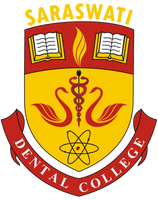
Are you mindful of how your child brushes their teeth? If you've seen them brushing vigorously, almost like they're trying to scrub something off, it may be a cause for concern. While brushing is vital for keeping the mouth clean and healthy, applying too much pressure can actually damage the teeth and gums.
Primary (milk) teeth are important for chewing, speaking, and guiding the proper eruption of permanent teeth. Regular brushing helps control bacteria and remove plaque, lowering the risk of cavities and gum problems. However, aggressive brushing can wear down the enamel—the protective outer layer of the teeth—leading to permanent damage if not addressed early.
Effects of Brushing Too Hard
Using too much force while brushing—especially with a hard-bristled toothbrush and abrasive toothpaste—can lead to several oral health issues:
Enamel Erosion Brushing aggressively can wear away the outer enamel layer of the teeth. Since enamel protects the inner layers, its loss exposes the dentin, which contains nerve endings. This can result in sharp sensitivity to hot or cold foods and an increased risk of tooth decay.
Gum Recession Excessive brushing pressure can irritate and damage the delicate gum tissue, causing it to pull away from the teeth. This may lead to swollen or bleeding gums. Proper brushing should be gentle enough to clean while also stimulating the gums.
Increased Tooth Sensitivity As enamel wears down or gums recede, the underlying dentin becomes exposed. This makes teeth more sensitive to temperature changes and sugary foods.
Yellowish or Darker Teeth Dentin, which lies beneath the enamel, is naturally darker. When enamel is lost due to over-brushing, teeth may appear more yellow or dull.
Risk of Early Tooth Loss Aggressive brushing can contribute to decay and gum disease, potentially leading to early loss of baby teeth. This may affect the alignment of permanent teeth as they come in.
How to Identify If Your Child Is Brushing Too Hard
Check their toothbrush regularly—if it looks frayed or worn out too quickly, they might be brushing too hard.
If their teeth appear dull or slightly yellow, it could indicate enamel loss.
Encouraging proper brushing habits early ensures lifelong oral health. Brushing should be a happy ritual, not a stressful task for kids.
Proper Brushing Technique for Kids
Choosing the Right Dental Products
Select a soft-bristled toothbrush specifically designed for children, as hard bristles can damage their sensitive teeth and gums. Children also require fluoride toothpaste that has age-appropriate fluoride levels, which differ from those in adult toothpaste.
For children under 3 years, use only a smear of toothpaste about the size of a grain of rice. For children aged 3 to 6, a pea-sized amount is recommended. Always supervise young children while they brush to prevent them from swallowing the toothpaste.
Electric toothbrushes can be a useful option for children who have difficulty brushing effectively. Remind them not to apply too much pressure. Instead, they should gently place the brush on each tooth for about 10 seconds and allow the toothbrush to clean on its own.
Effective Brushing Techniques
Teach your child to hold the toothbrush at a 45-degree angle to the gumline. This helps remove plaque from both the teeth and the area along the gums, which is crucial for preventing decay and gum problems.
Encourage gentle, circular brushing motions rather than harsh back-and-forth scrubbing. V


No Any Replies to “Brushing Too Hard: Can It Damage My Child’s Teeth?”
Leave a Reply